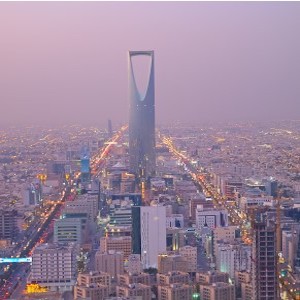Using AI to control energy for indoor agriculture
30 September 2024
Published online 12 March 2024
A team of researchers managed to reduce the temperature of Riyadh by 4.5 °C using reflective material and irrigatable greenery

Getty Images/iStockphoto
About 13,000 cities, holding more than 1.7 billion people, experience extremely high temperatures. Saudi Arabia’s Riyadh is one of the hottest in the world, with temperatures exceeding 50 °C in the summer.
A study published in Nature Cities indicates that it is possible to significantly reduce temperatures in desert cities, while reducing the cost of energy used. The researchers conducted large-scale simulations to reduce the temperatures and energy consumed in the cooling process in the Al-Masif neighborhood in Riyadh. They developed eight different scenarios to mitigate temperatures, determining the optimal strategies. The researchers tried different combinations of super-cool, or reflective, materials, with irrigated and non-irrigated greenery.
The recommended strategy uses reflective materials on rooftops, along with greater amounts of irrigated greenery to reduce the outdoor temperature in the city by 4.5 °C during the summer, and improve cooling energy conservation by 16%. The reflective materials were installed on the roofs of buildings to reflect a high percentage of sunlight and reduce heat absorption. Irrigation, on the other hand, helps improve transpiration cooling.
Riccardo Paolini, co-author of the study and assistant professor in the School of Arts, Design and Architecture, at the University of New South Wales, explains that the strategy recommends increasing the capacity of outdoor surfaces to reflect sunlight, providing effective external shading devices, and designing windows that allow night ventilation whenever possible.
Paolini told Nature Middle East that trees in urban areas provide cooling through different mechanisms. They provide shade that limits footpaths’ absorption of sunlight, and cool the air by not converting solar radiation into heat. The most important cooling mechanisms carried out by vegetation are evaporation and transpiration, and in both cases water vapor is released into the atmosphere, explains Paolini. The study found that while plants and trees that require watering can reduce the heat because of this evaporation and transpiration effect, non-irrigated greenery does not have the same effect, and can increase temperatures.
Rafiq Hamdi, a researcher at the Royal Meteorological Institute of Belgium who reviewed the paper for publication, told Nature Middle East that for the first time, the project included the use of highly innovative materials, irrigated green spaces, and other advanced mitigation techniques.
Yoshihide Wada, professor of plant sciences and environmental sciences at King Abdullah University of Science and Technology University (KAUST), who was not involved in the study, says the strategies can be implemented to greatly reduce heat risks and cooling energy requirements in light of the Green Riyadh project — which aims to plant 7.5 million trees and the King Salman Garden, the largest urban green park under construction in Riyadh.
On the other hand, the Water and Development Alliance (WADA) stresses the importance of considering the potential side effects of using the proposed strategy, such as the risk of depleteing scare water supplies.
The researchers now hope to work with the Royal Commission for the City of Riyadh to begin implementing a specially designed heat mitigation plan in the city, which will be the largest of its kind in the world.
doi:10.1038/nmiddleeast.2024.82
Stay connected: